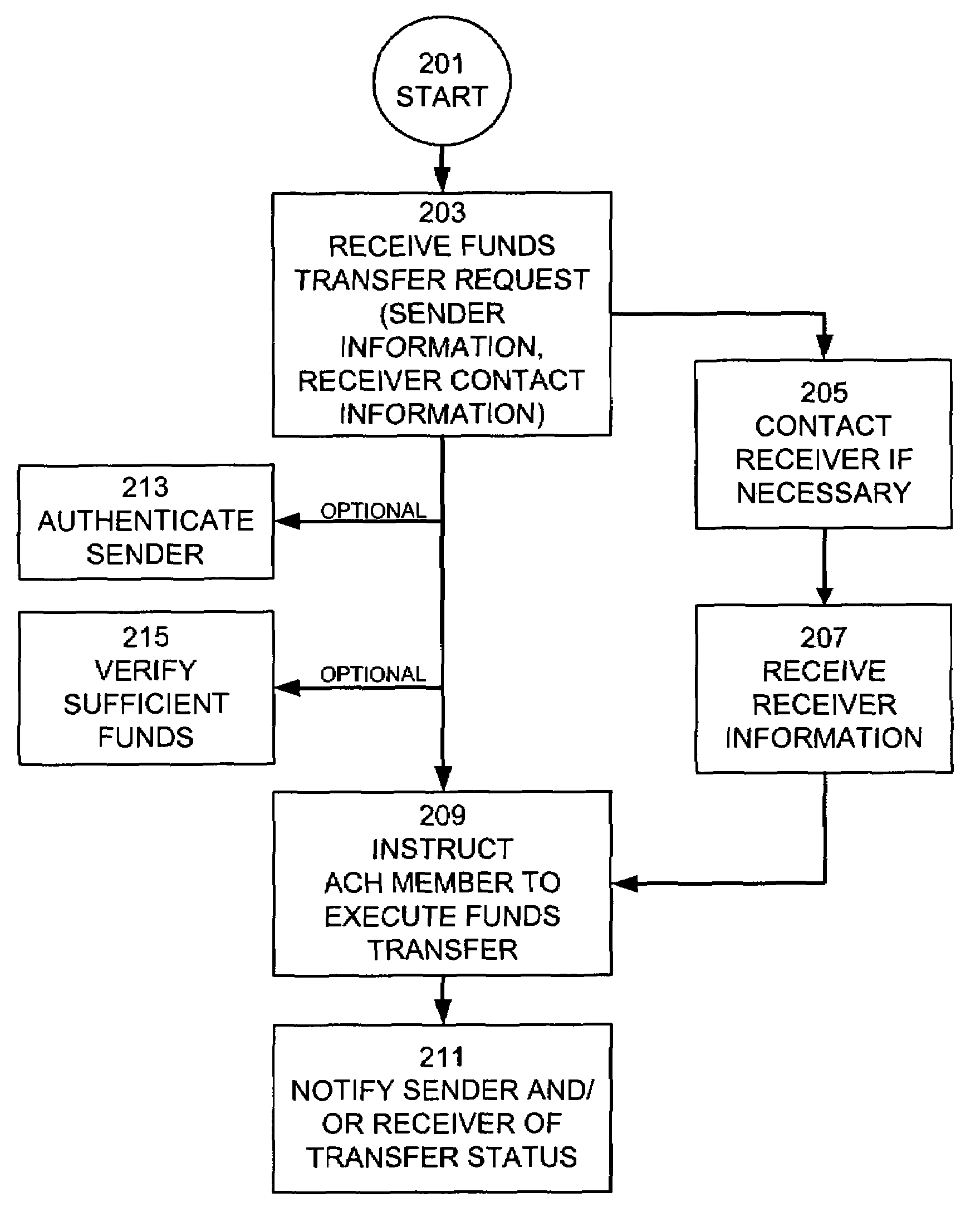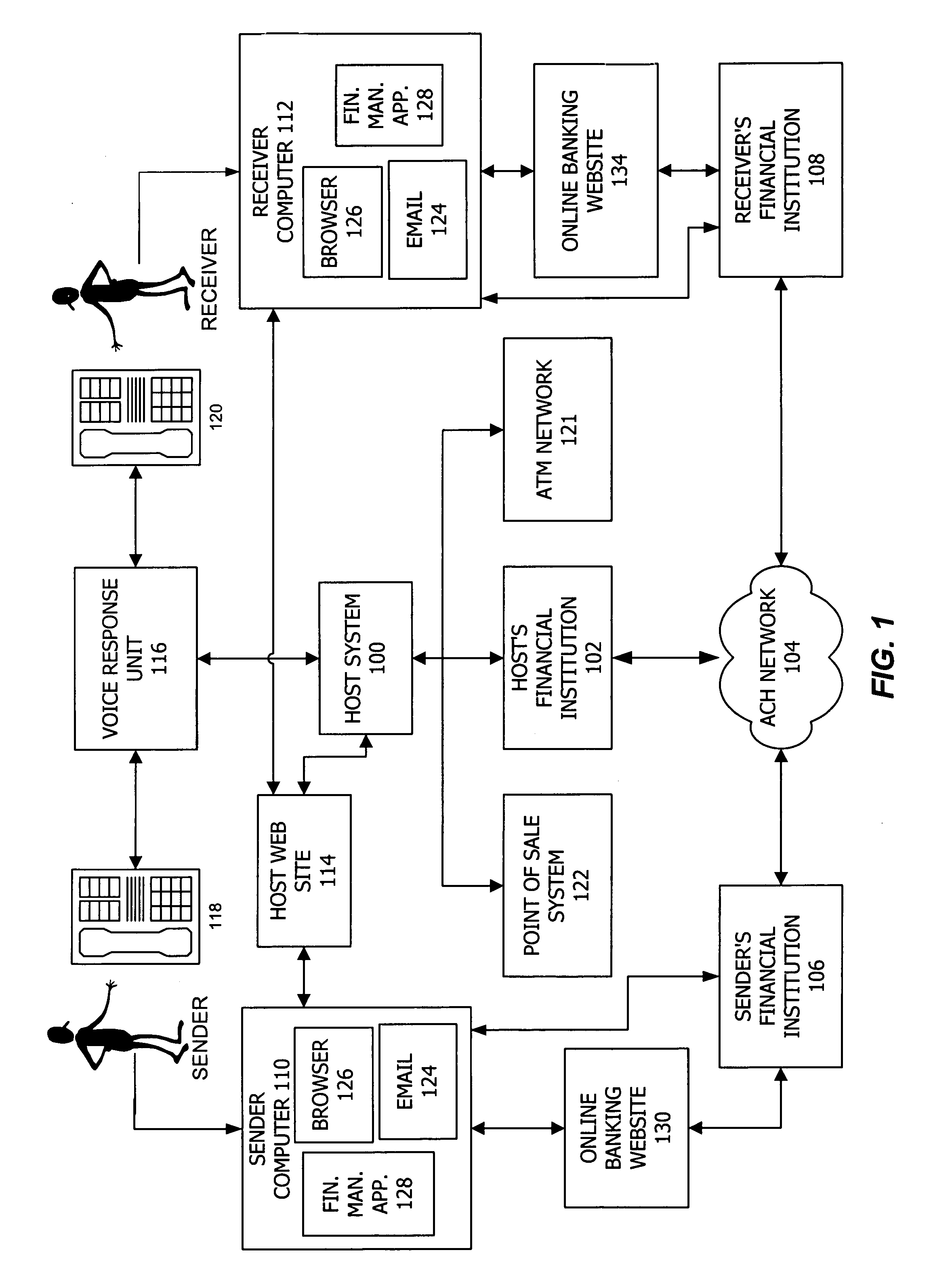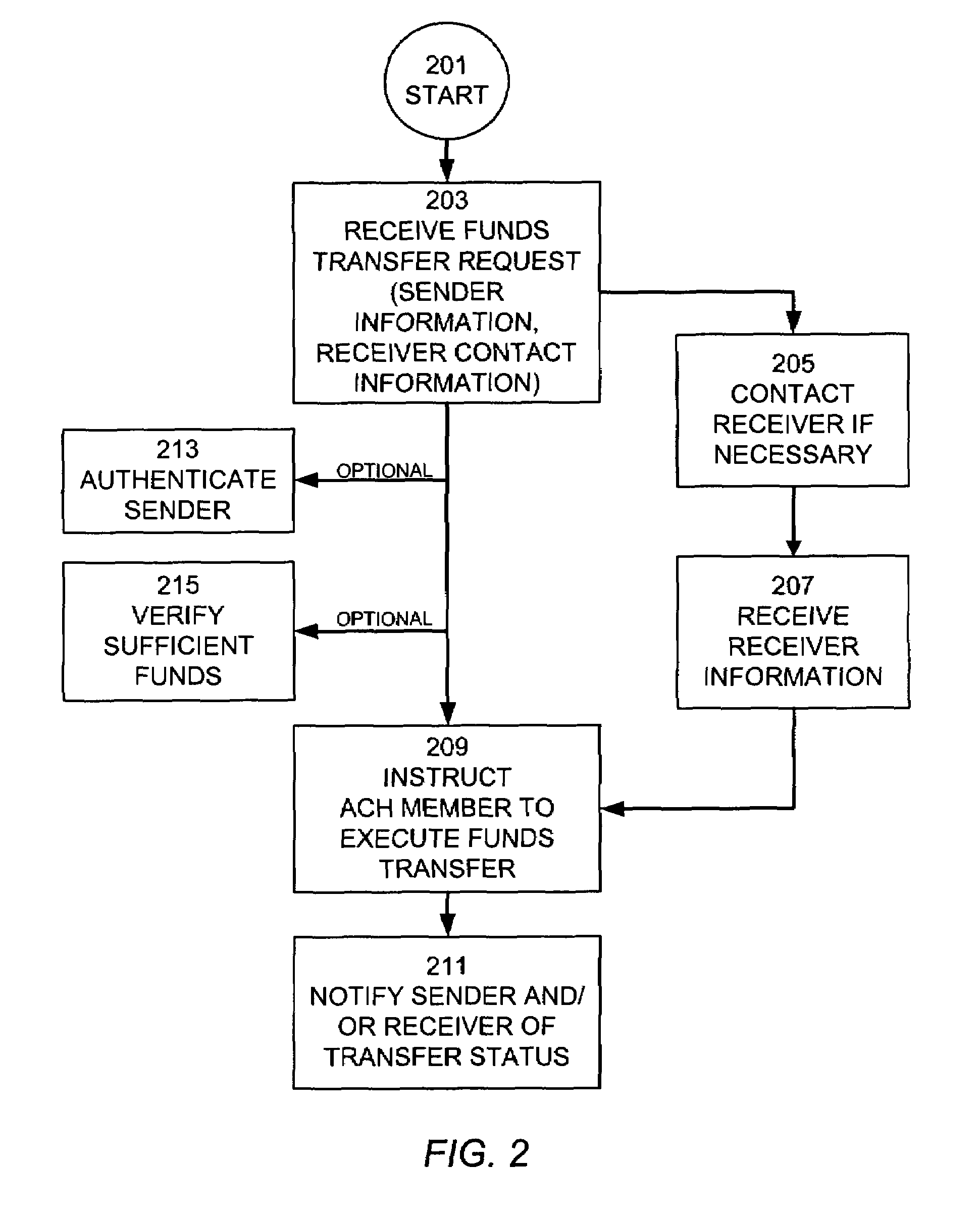Consumer-directed financial transfers using automated clearinghouse networks
a technology of automated clearinghouse networks and financial transfers, applied in the field of electronic transferring funds, can solve the problem that information alone is not enough to process a complete ach transfer, and achieve the effect of convenient and effective payment system
- Summary
- Abstract
- Description
- Claims
- Application Information
AI Technical Summary
Benefits of technology
Problems solved by technology
Method used
Image
Examples
Embodiment Construction
[0058]I. System Overview[0059]II. Process Overview[0060]III. Transferring Funds Between an Unregistered Sender and an Unregistered Receiver[0061]IV. Transferring Money Between an Unregistered Sender and a Registered Business[0062]V. Handling Risk[0063]A. Verifying Sender Identity[0064]1) Identity Verification Using Current Source Account Activity Information[0065]2) Identity Verification Using Access to Notional Accounts of the Sender[0066]B. Verifying Sufficient Funds[0067]C. Unauthorized Receiver[0068]VI. Additional Refinements and Embodiments[0069]A. Registration with Funds Transfer Service[0070]B. Automatic Updating of Financial Management Application Files[0071]C. Transfers Between an Individual's Accounts[0072]D. Payments to Tax Authorities[0073]E. Online Bill Presentment and Payment[0074]F. Payment for Web Purchases[0075]G. Alternative Source and Target Accounts[0076]H. Implementation Aspects
[0077]I. System Overview
[0078]Referring now to FIG. 1 there is a shown a combination ...
PUM
 Login to View More
Login to View More Abstract
Description
Claims
Application Information
 Login to View More
Login to View More - R&D
- Intellectual Property
- Life Sciences
- Materials
- Tech Scout
- Unparalleled Data Quality
- Higher Quality Content
- 60% Fewer Hallucinations
Browse by: Latest US Patents, China's latest patents, Technical Efficacy Thesaurus, Application Domain, Technology Topic, Popular Technical Reports.
© 2025 PatSnap. All rights reserved.Legal|Privacy policy|Modern Slavery Act Transparency Statement|Sitemap|About US| Contact US: help@patsnap.com



